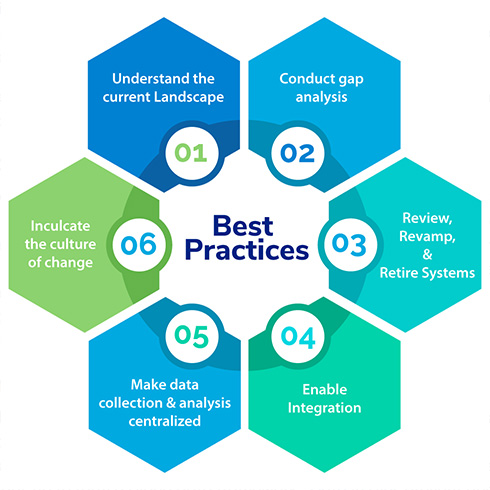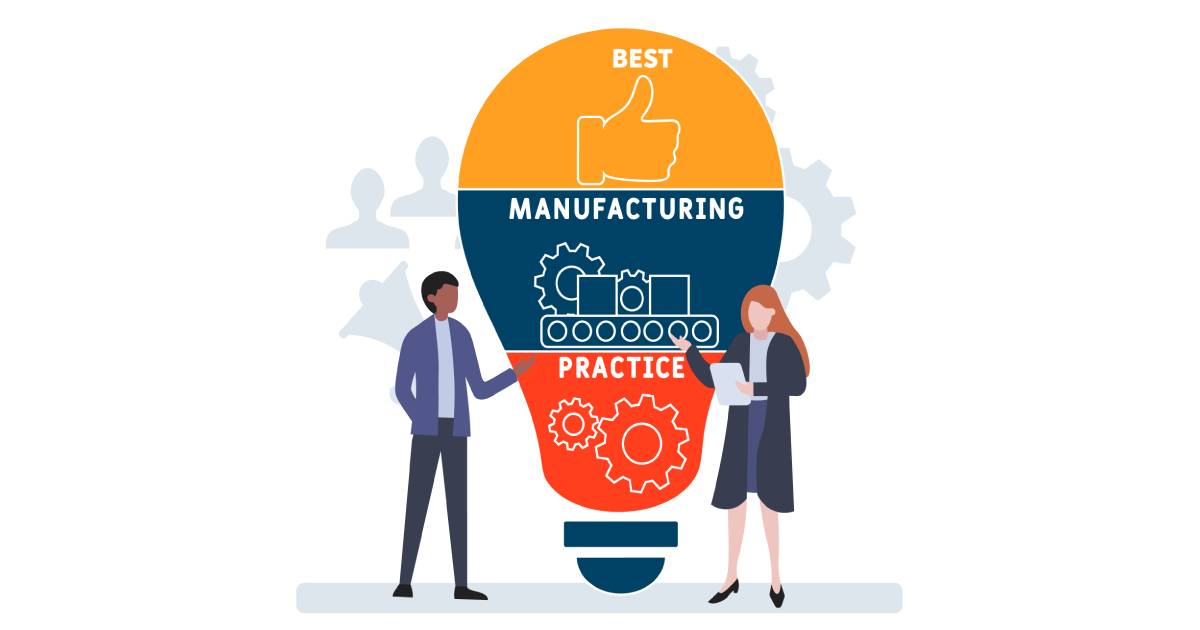6 Best Practices for Manufacturers to Achieve IT/OT Convergence
As the buzz around Industry 4.0 continues to build, manufacturers are grappling with the convergence of the physical and digital worlds. On one hand, they have an array of back-end physical systems that keep their production running, and on the other, they have a growing list of front-end digital platforms and solutions to boost efficiency and throughput.
Ensuring both these worlds converge in the most efficient way possible requires them to enable integration between Information Technology (IT) and Operational Technology (OT) systems.
Read on as we share six best practices for manufacturers to achieve IT/OT convergence.
The Siloed IT and OT worlds
Both IT and OT play critical roles in the manufacturing unit's overall functioning (and success). However, they've traditionally operated in isolation.
Consider this; the manufacturing landscape usually consists of a physical array of heavy industrial equipment. And the shop floor is laden with on-premises and cloud servers, storage systems, networking devices, and other solutions that run applications that process data.
The disconnection with these domains means that data exchange across production is minimal, and reliance on human oversight is paramount at every decision level for effective functioning.
Analysts at McKinsey say that "the standardized IT-OT maturity assessment is the basis for a holistic, optimized architecture definition," and rightly so.
In that light, as digital technologies get increasingly woven into the fabric of every manufacturing business, there is a pressing need to make IT and OT operate in a unified fashion. With technologies like IoT and Big Data Analytics allowing manufacturers to observe, understand, and influence the operational world, merging IT and OT processes, insights, and controls into a single environment has never been more realistic.
Bringing often-disparate IT and OT technologies and systems together can support seamless interoperability, improving not just machine-to-machine communication but also machine-to-human communication. Using standardized networking protocols, the workforce can more easily access relevant data from each physical system back to a centralized cloud server for real-time monitoring and analysis. The results of this analysis can then be passed back to the physical system to allow more effective controls & operations, often delivering improved accuracy and uptime.
Best practices for IT/OT convergence
So, it’s safe to concur that long-existing silos between the IT and OT systems must be removed for manufacturing businesses to realize a cohesive operational unit.
Such convergence can help reduce errors, cut costs, improve workforce productivity, enhance customer satisfaction, and bolster competitive standing.
To that end, following are the six best practices for a successful IT/OT convergence:

- Understand your current manufacturing landscape: The first step in enabling and sustaining IT/OT convergence is to evaluate how your physical and digital systems can help determine where and how you need to enable convergence.
- Conduct a thorough gap analysis: Once you have a detailed understanding of all your physical and digital systems, it’s time to conduct a thorough gap analysis. Such an analysis must help present a good starting point for integration while ensuring you have ticked all the necessary boxes for comprehensive IT/OT convergence.
- Review, revamp, or retire systems: Although most of the OT systems you depend on are critical for successful manufacturing operations, there might be many systems that no longer add value to your larger business goals. In fact, some systems might be reaching obsolescence. Therefore, before you commence with convergence, make sure to revamp or retire systems based on their capabilities and necessity.
- Enable integration: Once you’ve narrowed down to indispensable IT and OT systems, you need to standardize them across the enterprise. Enabling integration between different tools and systems and limiting the number of vendors to a bare minimum will ensure your manufacturing landscape is unified and manageable and that data flows throughout the factory floor – interruption-free.
- Make data collection and analysis centralized: It’s advisable to centralize data analysis for IT/OT convergence Instead of having different teams or departments use different tools and approaches to data collection and analysis, the usage of a common, enterprise-wide BI tool that collects and processes end-to-end data is a highly feasible endeavor. Teams can then leverage self-service options to get their hands on the data they need via personalized dashboards and reports.
- Inculcate a culture of change: IT/OT convergence is not just about tearing down physical and digital silos; it’s also about inculcating a culture of change. Empowering and educating the workforce on the benefits of convergence plays a huge role in ensuring different people with different mindsets work in a standardized manner to achieve common organizational goals.
The Final Word
For an effective Industry 4.0-readiness, manufacturers are driving significant efforts towards IT/OT convergence. However, many find the process too cost-intensive and risky. The above-mentioned best practices help manufacturers here. It can prevent the manufacturing landscape getting fragmented across different units and locations while allowing decision-makers to get a clearer view of business consistently.



